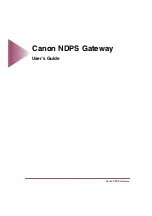
QX5
QXFXO4/QXISDN4/QXE1T1/QXFXS24; (SW Version 6.0.x)
39
QXFXO4/QXISDN4/QXE1T1/QXFXS24 Manual II: Administrator’s Guide
Dialing Delay Timeout
text field is used to define a timeout (in a
range from 0 to 2000 milliseconds) before injecting dialed digits.
Timeout specially refers to R2 DTMF signaling.
Incoming DNIS Size
text field indicates the number of received
digits (in a range from 0 to 255) required to establish a call. When
field has 0 value, system uses either timeout defined in the
Incoming digits timeout
field or the
End of Address
messages to
establish a call. Independent on the value in this field, the message
End of Address
always causes the call establishment.
Unused A:B:C:D
text fields require to configure unused C and D bits
of E1/T1 CAS signaling (A and B bits are predefined). Fields may
have either 0 or 1 values.
Invert A:B:C:D
text fields are used to invert the ABCD status bits in
time-slot 16 before TX and after RX. If bit is set to 1, the router
inverts it before transmission and after the receipt.
End of DNIS
(I-15) checkbox is used to enable End of DNIS service.
Collect Call
checkbox is only available when
Brazil
is selected in
the
Country
drop down list on the previous page of the wizard and
when the PBX attached to the QX supports this feature. When this
checkbox is selected and in case of incoming calls, always the called
destination will pay for the call. Option is particularly applicable
when calling from the mobile phone. Checkbox should be selected
when the appropriate feature is enabled on the PBX.
Fig.II- 46: CAS Signaling Wizard – Page 5
The
Allow Timeslot Blocking
checkbox indicates whether the system should use blocked timeslots to make outgoing PSTN calls. If this checkbox is
selected, the system will NOT use timeslots blocked by the carrier. If the checkbox is clear, the system will try to unblock the timeslots and will make
outgoing calls if succeeded.
Group B Support
manipulation radio button group is present only when
R2
signaling selected from
Signaling Type
drop down list on the previous page
is different from
R2 DTMF
and is used to enable/disable the
Group B Support
. The
Group B Support
manipulation radio button group offers following
selections:
•
Enable
– this selection enables
Group B Support
both for
answer and busy recognitions of transmit and receive signals.
This selection requires you to define transmit and receive
signals. The
Transmit
Answer Signal
and
Transmit
Busy
Signal
parameters are defined from the drop down lists on
this page. When transmit signals are selected, press
Next
on
this page to access the
R2 Receive Signal Settings
page
where
Receive
Answer Signal
and
Receive
Busy Signal
should be defined. Use the checkboxes to select the
Receive
Answer Signal
and
Receive
Busy Signal
values. Multiple
values are allowed for each signal.
Please Note:
Warning appears if you have selected the same
signal type both for receive answer and receive busy
recognitions.
•
Partial Enable
– selection partially enables
Group B
Support
with for answer recognition only. This selection
requires you to define transmit and receive signals. The
Transmit
Answer Signal
parameter is defined from the drop
down list on this page. When transmit signal is selected, press
Next
on this page to access the
R2 Receive Signal Settings
page where
Receive
Answer Signal
should be defined. Use
the checkboxes to select the
Receive
Answer Signal
value.
Multiple values are allowed for each signal.
•
Disable
– selection disables
Group B Support
and requires
defining the
Answer Signal
parameter.
Fig.II- 47: CAS Signaling Wizard – Receive Signal Settings page
The
Trunk CCS Signaling Settings
page allows configuring CCS signaling settings and gives a possibility to select timeslots for signaling data
transfer/receive and voice transfer. The page consists of the following components:
















































